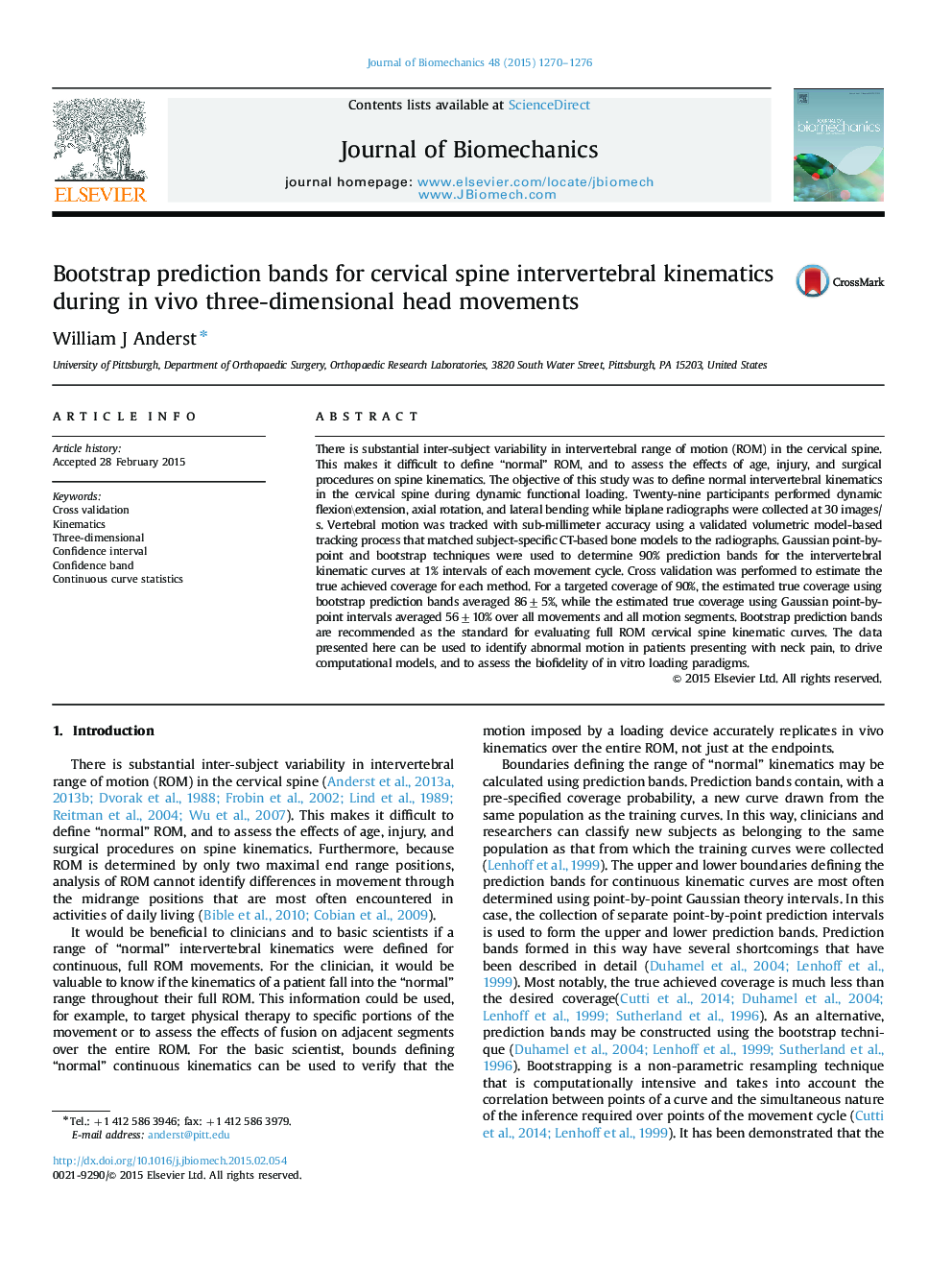| Article ID | Journal | Published Year | Pages | File Type |
|---|---|---|---|---|
| 871779 | Journal of Biomechanics | 2015 | 7 Pages |
There is substantial inter-subject variability in intervertebral range of motion (ROM) in the cervical spine. This makes it difficult to define “normal” ROM, and to assess the effects of age, injury, and surgical procedures on spine kinematics. The objective of this study was to define normal intervertebral kinematics in the cervical spine during dynamic functional loading. Twenty-nine participants performed dynamic flexion\extension, axial rotation, and lateral bending while biplane radiographs were collected at 30 images/s. Vertebral motion was tracked with sub-millimeter accuracy using a validated volumetric model-based tracking process that matched subject-specific CT-based bone models to the radiographs. Gaussian point-by-point and bootstrap techniques were used to determine 90% prediction bands for the intervertebral kinematic curves at 1% intervals of each movement cycle. Cross validation was performed to estimate the true achieved coverage for each method. For a targeted coverage of 90%, the estimated true coverage using bootstrap prediction bands averaged 86±5%, while the estimated true coverage using Gaussian point-by-point intervals averaged 56±10% over all movements and all motion segments. Bootstrap prediction bands are recommended as the standard for evaluating full ROM cervical spine kinematic curves. The data presented here can be used to identify abnormal motion in patients presenting with neck pain, to drive computational models, and to assess the biofidelity of in vitro loading paradigms.
